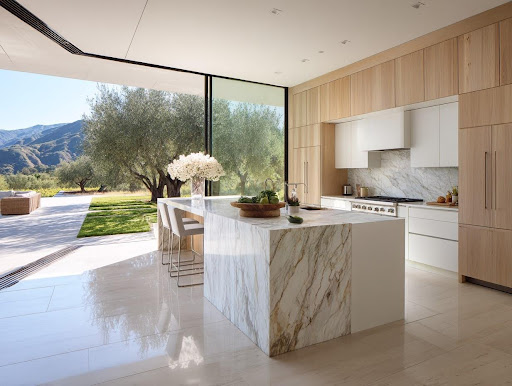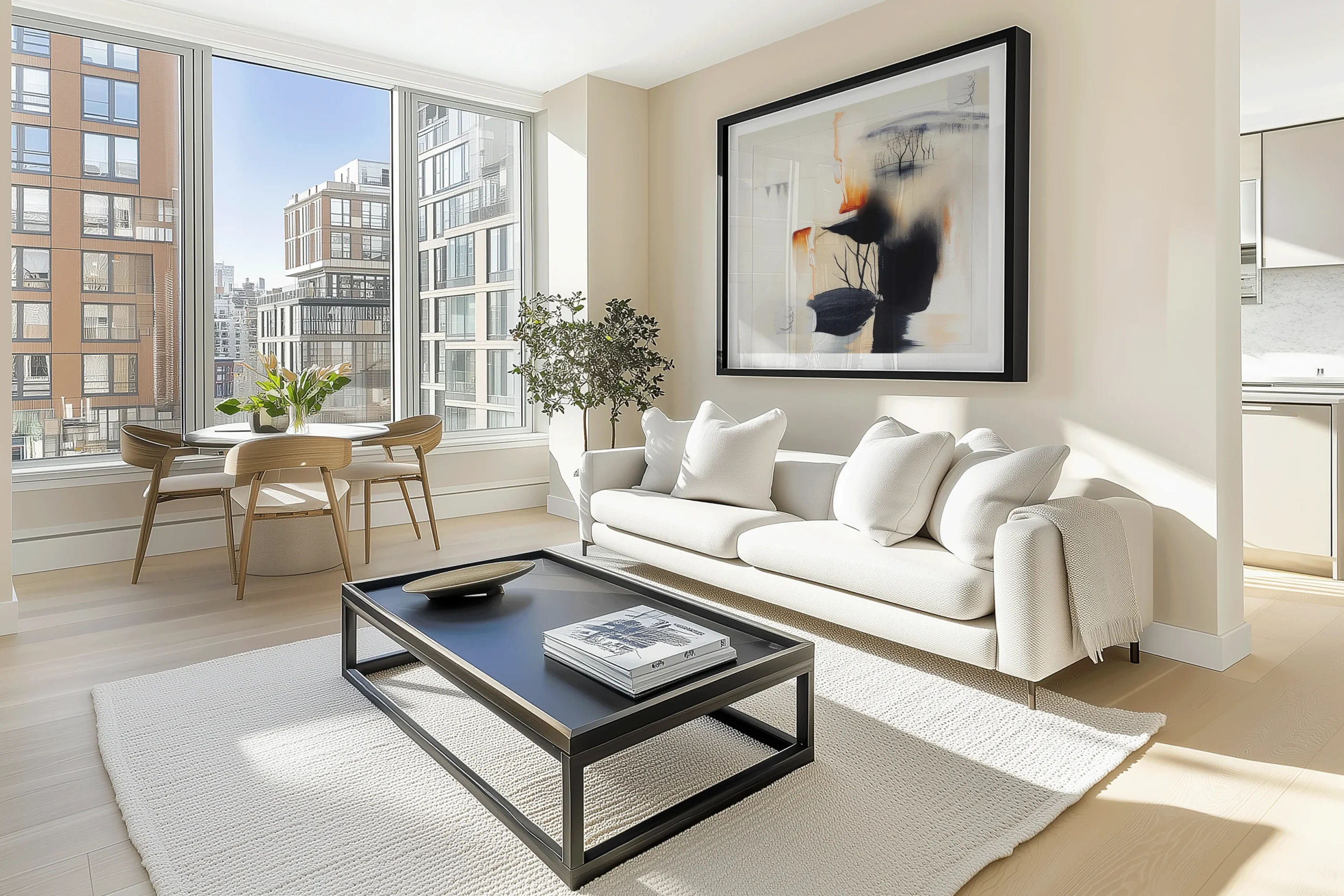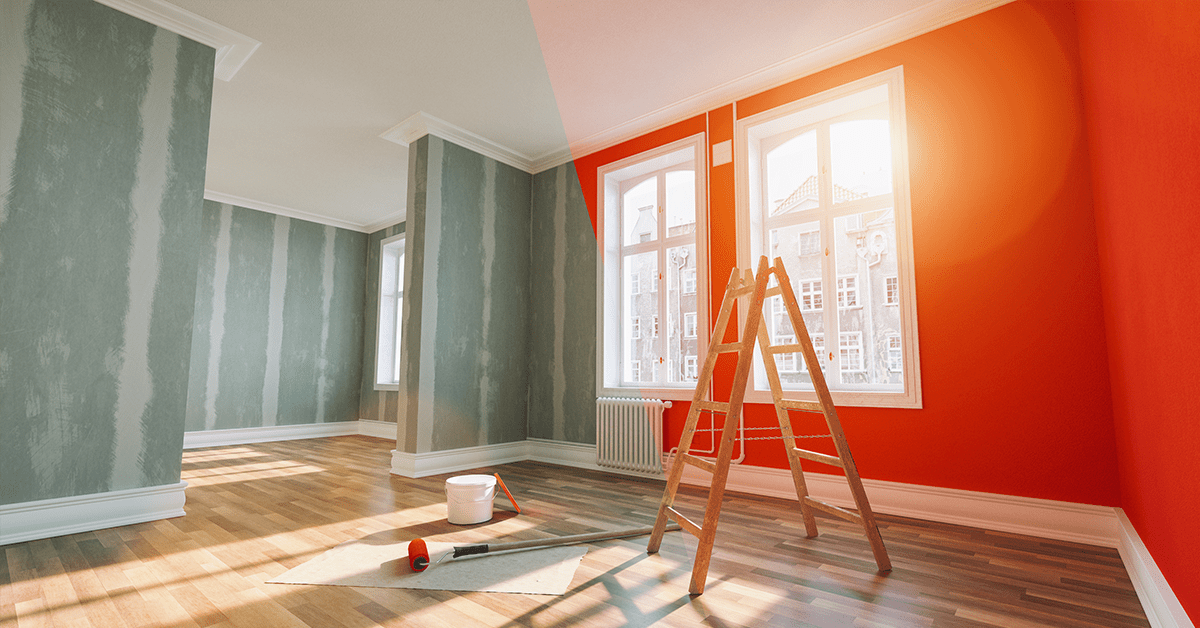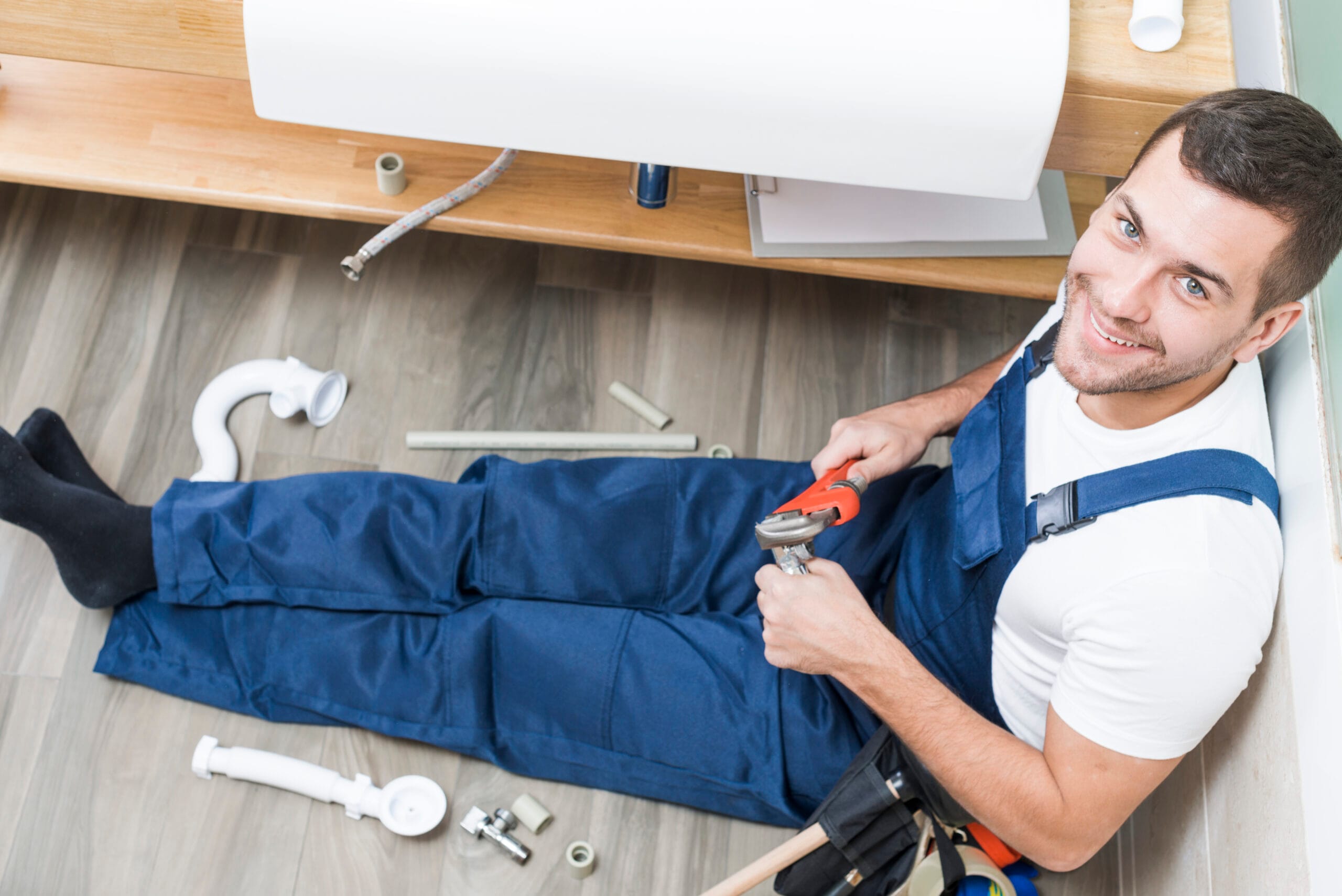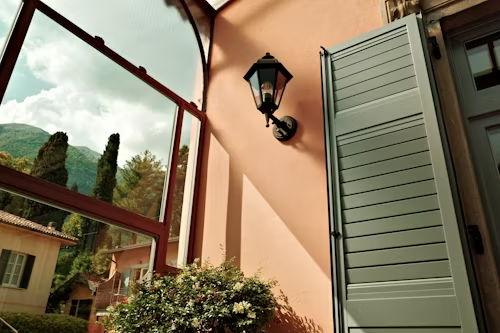Ready-to-assemble (RTA) cabinets can save you serious money if you pick the right ones.
The challenge? Photos online can look great, but not every cabinet is built to last.
This guide shows you how to judge quality fast—so you buy once, install with confidence, and enjoy your kitchen for years.
Quick Take: What “Quality” Looks Like
If you only have a few minutes, use this short checklist:
- Box: 5/8″–3/4″ thick plywood sides; 1/2″ or thicker back; tight dados or confirmat screws (not just staples).
- Finish: Smooth, even color; sealed edges; durable topcoat; no flaking at corners.
- Hardware: Soft-close, 6-way adjustable hinges; full-extension slides (ideally under-mount) rated 75 lb or more.
- Drawers: Solid wood or thick plywood boxes with dovetail joints; bottom at least 1/4″.
- Edges: Thick PVC edge banding (not thin paper/melamine) that won’t peel.
- Fit: Square cabinet box; doors hang straight; gaps even; pre-drilled holes clean.
- Docs: Clear assembly manual, labeled parts, extra fasteners, and a real warranty.
- Safety: Low-emission materials (CARB2/TSCA Title VI compliant); optional KCMA certification.
Keep reading for the why (and how to check each item quickly).
What Is an RTA Cabinet?
RTA cabinets come flat-packed. You assemble the box, attach doors, install drawers, and add hardware. Good RTA brands use the same materials and hardware as many “shop-built” cabinets. The difference is labor: you do more of the assembly, and you save.
Materials Matter Most
The cabinet box (also called the case) takes daily abuse. Look here first.
Plywood vs. Particleboard vs. MDF
- Plywood (best): Layers of wood veneer glued with the grain crossed. Strong, holds screws well, resists sagging and moisture better. Look for 5/8″ or 3/4″ thickness for sides and shelves.
- Particleboard (budget): Wood chips pressed with resin. Smooth and stable but weaker screws and can swell with moisture. If you choose it, make sure it’s high-density and well-sealed.
- MDF: Very smooth surface for painted doors and panels. Great for paint finish, but for the box, plywood is usually tougher.
How to check: Ask for a sample or a close-up video. You should see distinct plywood plies, not fuzzy, crumbly edges.
Back Panel Thickness
- Better: One-piece 1/2″ back panel (strong and easy to hang).
- Okay: 1/4″ back with hanging rails, but make sure rails are solid and well-anchored.
Strong Box Construction
Materials are half the story; how the box is joined is the other half.
- Dado or Rabbet Joints: Panels slot into each other. Add glue + screws = very strong.
- Confirmat Screws: Special wide-thread screws used in cabinet boxes; hold tight in sheet goods.
- Cam & Dowel: Common in flat-pack. Fine if the cams are metal and the dowels fit snugly. Loose cams = wobbly box.
- Staples Alone: Red flag for the main structure. Staples can be fine for holding while glue cures, but not as the only fastener.
Thickness targets:
- Sides & shelves: 5/8″–3/4″
- Bottom/top stretchers: 3/4″
- Back: 1/2″
Tip: Ask if shelves are full-depth and adjustable with metal pins. Sagging shelves are a pain later.
Face Frame vs. Frameless (Euro)
- Face Frame: A wood frame on the front adds rigidity and the classic look. Doors overlay the frame.
- Frameless (Euro): No front frame; more interior space and a clean, modern style. Requires precise drilling and strong hardware.
Both can be excellent. Focus on box thickness and hardware quality, not just the style.
Doors & Drawer Fronts
These are what you touch every day.
- Solid Wood (Stained): Natural beauty and easy to refinish. Check for even grain and tight joints in Shaker rails/stiles.
- MDF (Painted): Smooth, stable, and won’t show wood grain lines through paint. Great for Shaker or slab doors.
- Veneer: Thin real wood layer over a stable core. Can look great; make sure edges are sealed well.
Check the finish: Run your hand across an in-store sample or ask for a mailed chip. It should feel smooth, not gritty, and corners should be fully coated.
Drawer Boxes & Slides
Drawers take a beating. Buy strong once.
- Box Construction: Look for dovetail joints (interlocking teeth). If not, tight dowel/screw joints are acceptable, but avoid flimsy butt joints.
- Materials: Solid hardwood or thick plywood sides; 1/4″ bottom minimum, ideally 3/8″ or 1/2″ in larger drawers.
- Slides:
- Under-mount, soft-close, full-extension = best combo (hidden, smooth, stable).
- Side-mount, full-extension can also be fine if name-brand and rated 75 lb+.
Test (if possible): Load a sample drawer (stack some plates) and open/close. It should glide without grinding or wobble.
Hinges & Shelf Hardware
- Hinges: Soft-close, 6-way adjustable, clip-on style. Clip-on hinges are easier to remove and adjust after install.
- Mounting Plates: Metal, not plastic. Screws bite into solid wood or thick plywood.
- Shelf Pins: Metal pins fit tightly; plastic cups can crack over time.
Finish & Edge Banding
A tough finish protects your investment.
- Topcoat: Look for multi-step finishes with a durable sealer (often UV-cured on factory lines). Even sheen, no cloudy patches.
- Edge Banding:
- Thick PVC (1–2 mm) on door and cabinet edges resists chipping.
- Thin paper or melamine banding can peel or show seams.
Water Test (on a sample): A few drops should bead up and wipe clean without softening the surface.
Fit, Sizing & Layout Details
Quality also shows up in the “small stuff.”
- Square Boxes: Measure diagonals—should match. Doors should hang straight, with even gaps.
- Toe Kick Height: Commonly ~4 1/2″. Check if matching skins and filler panels are available.
- Overlay/Reveal: On framed cabinets, make sure door overlays are consistent (e.g., 1/2″ or full overlay).
- Fillers & Panels: Brand should offer fillers, crown, light rail, and panels to create a finished look.
Assembly Experience (Don’t Ignore This)
Great parts + lousy instructions = a bad weekend. Look for:
- Clear Manual: Step-by-step with diagrams, not just a QR code.
- Labeled Parts: Stickers or stamps that match the manual.
- Pre-Drilled Holes: Clean, accurate, not blown-out or misaligned.
- Fastener Quality: Metal cams, solid screws, and extras in the bag.
- Help Options: Phone/chat support, assembly videos, and replacement part policy.
Certifications & Safety
- Low Emissions: Ask for CARB2/TSCA Title VI compliance (limits formaldehyde in composite wood).
- KCMA Certified (optional): Means cabinets passed wear, load, and temperature tests. Not required, but a nice trust signal.
- Warranty: Get it in writing: box, finish, and hardware coverage lengths.
Common Red Flags (Walk Away If You See These)
- Stapled-only box corners with no glue or screws.
- 1/4″ backs with no hanging rails.
- Rough edge banding with lifted corners.
- Flimsy slides that don’t fully extend.
- Hinges with limited adjustment and no soft-close on “premium” lines.
- Vague specs (“engineered wood” with no thickness listed).
- No samples, no manual, no clear return policy.
Price vs. Value: How to Budget Smart
- Entry: Particleboard box, side-mount slides, simple finishes. Works for rentals or light use.
- Mid: Plywood box, soft-close hinges, full-extension slides, better finishes. Best value for most homes.
- High: 3/4″ plywood, dovetail drawers, under-mount slides, premium paint/stain, full accessory line.
You don’t need every “best” feature. Prioritize the box, hardware, and finish—those three drive long-term happiness.
Smart Questions to Ask the Seller
- What thickness are the sides, shelves, and back? (Get numbers.)
- Are boxes plywood or particleboard? If mixed, which parts use what?
- What joinery holds the box together?
- Which hinges and slides are included? (Soft-close? Full-extension? Weight rating?)
- What drawer box construction is used? (Dovetail? Bottom thickness?)
- Is the finish UV-cured or multi-step? How is edge banding applied?
- Are materials CARB2/TSCA Title VI compliant?
- Can I get a sample door or panel? (Often refundable.)
- What does the warranty cover and for how long?
- What is your replacement part policy if something arrives damaged?
Write down the answers. Real brands will give you real specs.
Inspect on Delivery (Before You Start Assembly)
- Count boxes against the packing list.
- Open carefully and check corners, edges, and finishes.
- Verify hardware bags and hinges/slides are present.
- Dry-fit one box to confirm hole alignment and squareness.
- Report issues immediately with photos. Don’t start building damaged parts.
Good / Better / Best Snapshot
| Feature | Good | Better | Best |
| Box Material | Particleboard | Mixed (ply sides, PB back) | Full plywood |
| Thickness | 1/2″ sides | 5/8″ sides | 3/4″ sides |
| Back Panel | 1/4″ w/ rails | 3/8″–1/2″ | 1/2″ one-piece |
| Joinery | Cam + dowel | Cam + confirmat | Dado + screws + glue |
| Hinges | Basic, adj. | Soft-close, 6-way | Premium soft-close |
| Slides | 3/4 extension | Full-extension | Under-mount, full-ext., 75–100 lb |
| Drawers | Stapled box | Doweled, 1/4″ bottom | Dovetail, 3/8″–1/2″ bottom |
| Finish | Basic lacquer | Multi-step | UV-cured, thick edge banding |
| Docs | Simple sheet | Illustrated guide | Full manual + videos |
Use this table to match your budget to your must-haves.
A Simple Shopping Flow (Do This)
- Shortlist 2–3 brands based on style and price.
- Collect specs (thickness, joinery, hardware, finish).
- Order samples (door front + finish chip).
- Stress-test the samples: scratch lightly, check edges, wipe with a damp cloth.
- Choose the line that nails the box + hardware + finish, even if it means skipping a fancy interior accessory.
- Confirm lead times, return policy, and replacement parts process.
- Place the order with a clear parts list and a few extra fillers just in case.
Final Word
RTA cabinets can be a smart, durable choice—if you know what to look for. Focus on a strong box, reliable hardware, and a tough finish.
Ask direct questions, get samples, and inspect on arrival. Do that, and you’ll end up with cabinets that look beautiful on day one and still feel solid in year ten.
If you want, share the brand or product page you’re considering—I can scan the specs and tell you exactly where it lands on the Good/Better/Best scale.







